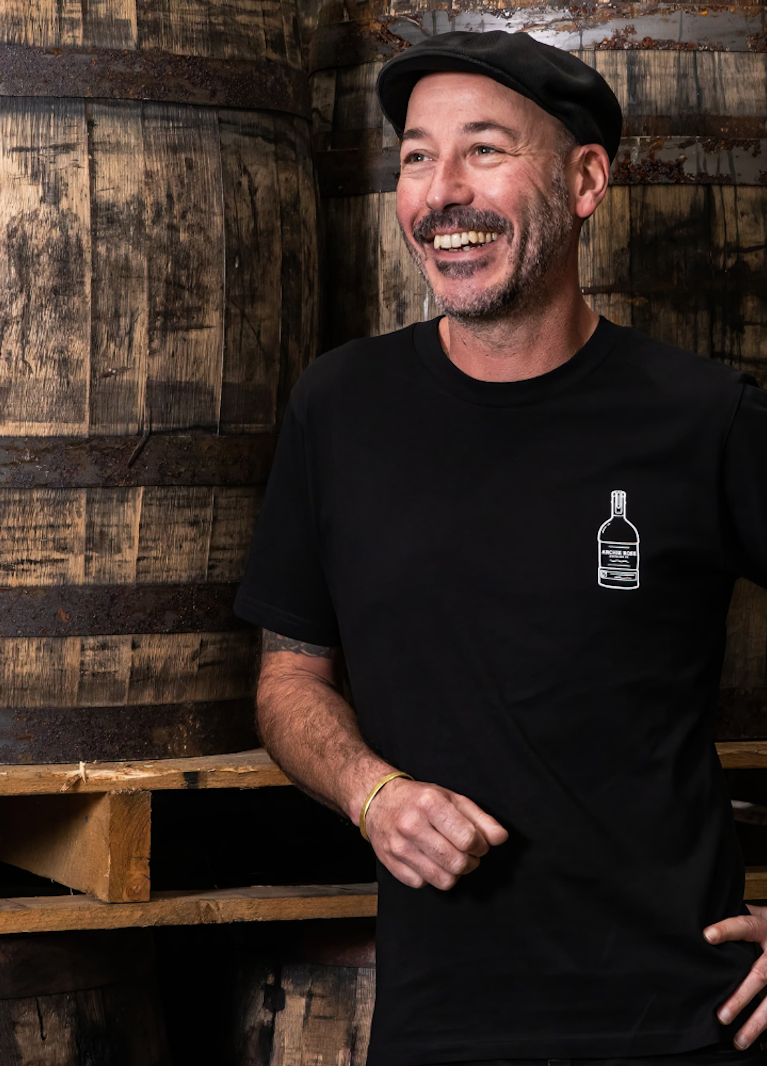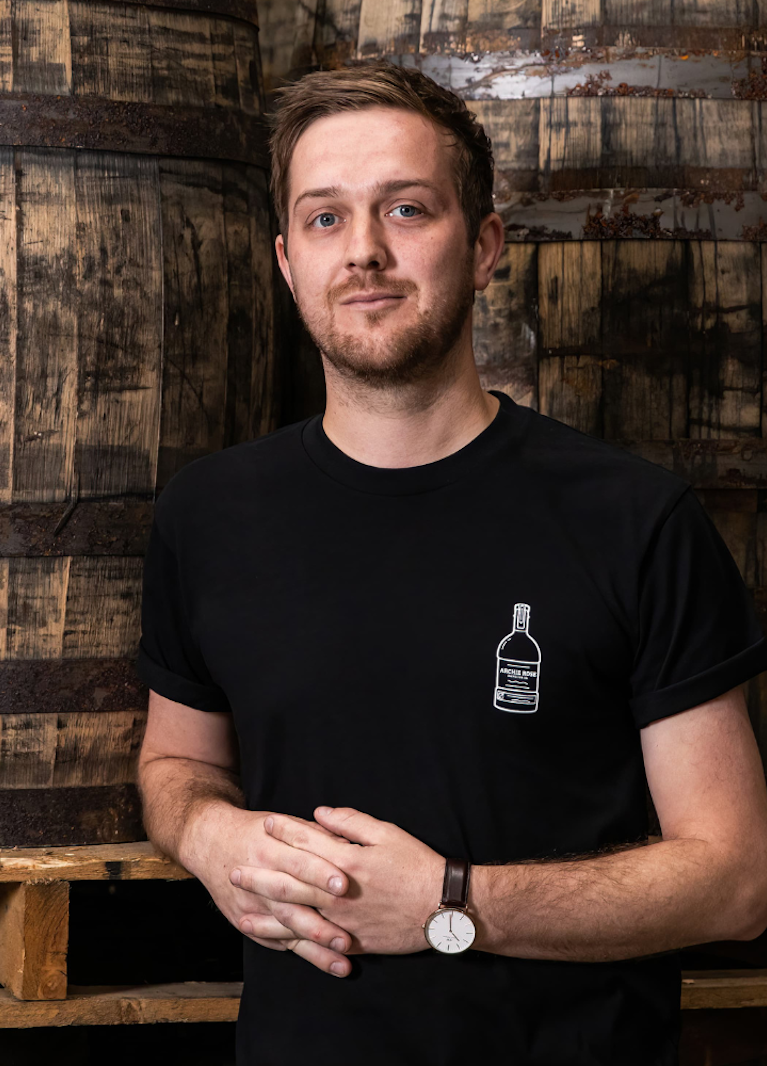An Archie Rose Guide To The Wonderful World Of Whisky
For whisky aficionados and recent whisky converts, we present to you this comprehensive guide to whisky (and whiskey) created with utmost care and consideration by our excellent team of Archie Rose Brand Ambassadors Nick, Paul, Mitch, Dan and Samuel. Covering the basics of everything (and we mean ALL the basics) you need to know, we hope this will make the wonderful world of whisky seem a little less daunting. As our Head of Hospitality Harriet Leigh famously once said “life is too short to put good whisky on high shelves and revere. It’s made to be drunk. Please help it fulfil its destiny”.
WHAT WHISKY IS MADE FROM AND WHY MALT MATTERS
WA Brand Ambassador Mitch Gurrin
Whisky refers to Scottish, Canadian or Japanese grain spirits whilst Whisk(e)y refers to grain spirits distilled in Ireland and in the United States. Generally speaking, Australian whisky has been produced in the style of the Scots (which is why Australian whisky is spelt without the ‘e). Whisky has always been made from whatever cereal grain has grown best around us. From the moment we had enough grain to make our daily loaf of bread, we looked to more extra–curricular uses for our excesses - usually in the form of beer, and eventually whisky!
Historically, ‘old world’ whisky - Scottish and Irish whisky - was made from barley, but as whisky travelled the world, it continued to evolve as people discovered new and exciting grains endemic to those lands. Distillers learned that selection of particular grain types can greatly impact the final flavour of the whisky and in turn, used them to create new categories of whisky identifiable to their location.
So let’s break down the big four types of grains used in whisky production, the characters of malt, what makes them unique and in which of the whisky family they are usually found.
Barley:
Malted Barley: Commonly used: Scotch, Japanese Whisky, Malt Whisky (Single and Blended)
Malted Barley is the oldest and most common grain used in the production of whisky. The term ‘malting’ refers to the process undertaken, whereby the barley is essentially tricked into thinking it is going to germinate, breaking down all its stores of carbohydrates into yummy simple sugars for our yeast to eat and turn into delicious alcohol. Malted barley is renowned for its cereal qualities - nutty, biscuity, malt and chocolate are common flavours associated with malt whisky.
Unmalted Barley: Commonly used: Irish Whiskey
As the name suggests, unmalted barley does not undergo the malting process, providing a much lighter, softer spirit enhancing the raw cereal qualities of the grain with notes of bright citrus, green apples, pears and mint. Its use began in Ireland in an effort to dodge taxes imposed on malted barley by the UK government in the early 1800s and has since become synonymous with Irish whiskey production.
Corn: Commonly used: Bourbon, American Whiskey, Corn Whisky, Moonshine
The biggest grain used in the production of bourbon, and American whiskey more generally. The use of corn in whisky came in the 1700s with the rise of corn as a major cereal crop in the United States. Corn doesn’t necessarily bring a classically identifiable flavour to a base spirit and is often used in a mixed mash bill with other grains to assist in developing character and reliant upon oak to develop the vanilla/caramel profile familiar with American whiskey. However, it is known for its full-bodied, rich-buttery texture and coupled with its high yield, accessibility and low cost make it perfect for large-volume whisky production.
Wheat: Commonly used: Bourbon, American Whiskey
100% wheat is particularly uncommon to find as a dominant grain in whiskey production and is more so used as a ‘softening’ agent in mash bills - particularly in bourbon. Wheat often brings notes of honey, soft bread and mint to the spirit and serves to harmonise characteristics from other grains or the barrels the spirit is aged within. “Wheated bourbons” as they are most often referred to, comprise some of the most well-known (Makers Mark) and most sought after (Pappy Van Winkle) whiskies on the market.
Rye: Commonly used: American Rye Whiskey, Canadian Whisky, Archie Rose Rye Malt Whisky
Rye grain is synonymous with big bold spicy styles of whisky - the higher the rye content, the spicier the whisky. Rye grain came to prominence in whisky production when European settlers brought rye to North America and discovered its proclivity to grow virtually everywhere, particularly in the remote, cold and harsh climates of the Northern East US and Canada. Herbaceous notes of black pepper, anise, and mint are common in rye whiskies, and although distinct, are often mixed with corn, wheat or barley for balance.
Our award-winning Rye Malt Whisky is produced via a mash bill consisting of malted rye whilst rye whisky refers to American and Canadian whisk(e)y that has been distilled with rye grain.
Hear more from Archie Rose Master Distiller Dave Withers about why malt matters here

A BEGINNERS GUIDE ON HOW TO DRINK WHISKY
VIC & TAS Brand Ambassador Paul Slater
With so many ways to enjoy our favourite dark spirit, yet so little room for words, let’s focus on four of the best ways to imbibe your liquid gold.
Neat
It may seem obvious, but how could we omit this serve? Typically reserved for upper echelon drams; a good measure of whisky in a well-suited glass - think Glencairn, Copita etc.- allows the aromas to be channelled to the olfactory to get the most out of your liquid. A few drops of filtered water may also open up the aroma and expand the mouthfeel.
Cocktails
The rich, full-bodied nature of whisky allows it to shine when mixed with complementary ingredients, potentially becoming greater than the sum of its parts. Plus it's fun to experiment with! We’ve now been enjoying classics such as the Old Fashioned, Whisky Sour, Manhattan or Rob Roy for centuries. Hit up Archie’s Journal for some inspiration, recipes and tips.
The Highball
A whisky soda is kinda like a Martini; sounds simple but a really well-made example will change your world. Best to ask our Japanese friends for guidance here; typically served with 45ml chilled whisky, hand-cut ice, chilled glassware (highball) and 120ml quality soda water. Throw in a lemon wedge if you like to garnish.
The Boilermaker
The ancient art of pairing a fermented malt beverage with a distilled malt spirit. A well-matched pair of beer & whisky - sipped alternately side by side - can elevate the complementary flavours of the two liquids. Nowadays our pairings are more refined than the days of turbocharging your knockoff after a day on the tools. Try a rich, fortified cask whisky alongside a brown ale or stout - delicious!
And don’t forget the golden rule; drink your whisky the way you like it!

SINGLE MALT VS RYE MALT WHISKY
QLD & NT Brand Ambassador Samuel Russ
When it all comes down to it, whisky is simply a spirit, distilled from grains, and aged in wood. The decisions - or, more often, laws - that dictate these few variables are what shape the weird and wonderfully diverse world of whisky.
In Australia, the only legal stipulations for the production of whisky are that it must be distilled from a fermented liquor of cereal grain and aged for a minimum of two years in wood.
Single Malt Whisky
Single Malt Whisky is a legal definition in a number of countries around the world however Australia is not one of them. This said it can be implied that the Scottish tradition is followed when this term is used internationally.
To break the term down, there are three key distinctions to be made:
Single refers to all of the whisky in the bottle being produced by one distillery, malt is referring to the use of solely malted barley as the grain for the whisky, and whisky ensures that this subcategory is compliant with the overarching stipulations for whisky production in Australia.
Rye Malt Whisky
Rye Malt Whisky, again, is not a legally defined term in Australia. In the case of Archie Rose, this spirit consists of a combination of malted barley (Australian pale malt) and malted rye which is where it largely differs from a traditional American rye whisk(e)y.
American Rye Whiskies largely use unmalted rye which offers a much spicier and drier final product. While much lower-yielding and very difficult to work with, the malted rye gives Archie Rose’s Rye Malt Whisky beautifully soft notes of custar, baked apple pie, and fresh herbal finish.

MATURATION, CLIMATE AND AGE STATEMENTS
NSW & ACT Brand Ambassador, Dan Ritchie
We often talk about age statements when choosing what whisky to drink, but what does that number mean? Well, it really depends where it comes from.
Climate plays a huge role when maturing whisky. The wood will expand in higher temperatures, pulling the spirit in and imparting flavour. As it cools, the wood contracts, expelling the spirit back into the barrel and taking all of that beautiful colour and flavour with it. This process, known as breathing, repeats constantly over the duration of maturation.
Different climates will affect this process in a big way. Take Scotch Whisky for example. They largely tend to have age statements that vary from 12 years old up to 30, 40, or even 50 year old releases. Compare that to Australian Whisky releases that rarely have an age statement and, for the most part, tend to be around 3-5 years or bourbon where it’s rare to find much above a 15-year-old. This is down to the climate and how much interaction the spirit is getting with the wood.
A barrel lays dormant (not breathing) below around seven degrees celsius. If you’ve ever been to the Highlands of Scotland, you’ll know that it regularly drops below that temperature throughout most of the year. Now, compare that to Sydney where that’s a fairly rare occurrence. Next time you’re looking at a 12-year-old Single Malt from Scotland and a three-year-old Whisky from NSW, look at the colour. All of that colour is coming from the barrel, so you’ll notice a big difference based on the climate they were matured in.
The other thing to consider is evaporation, or “The Angel’s Share”. The breathing process of whisky in a barrel gives us more interaction with the wood but it also leads to evaporation of the liquid inside. Scotch Whisky typically loses around 3-4% each year, whereas that number is closer to 8% each year for some Australian Whisky. So the longer you leave whisky in a barrel, the less whisky you have. The angels are thirsty in warmer climates!
So does older whisky mean better whisky? It really depends on the whisky, the cask, the climate and your own palate.
Hear more from Archie Rose Founder Will Edwards about whisky maturation here
CASKS - WHAT, WHERE AND HOW
Brand Advocacy Manager Nick Baxter
Casks are vital to whisky. So much so that laws in many parts of the world require that new make spirit (the name given to whisky before it’s aged) is aged in wooden barrels, usually oak, for a strictly governed amount of time to even be called whisky. For number nerds - that’s a minimum of two years in Australia and three years in Scotland.
Generally speaking, the cask contributes all of the colour* and a large chunk of the flavour to a whisky. The final flavour profile of a whisky is a delicate balance between the flavour of the new make spirit and the cask influence. Ultimately you want to taste something that is delicious, and that has some characteristics of the base product that is well integrated with the flavours from the cask.
The vast majority of whisky is aged in casks made from oak. Although this is not specified in Australian regulations (preferring for a more general ‘wood’ coverall), the majority of Aussie whisky uses oak of some sort, whether that be French oak (Quercus robur) or American oak (Quercus alba) - or even more exotic woods such as Mizunara Oak.
Since American law requires that new barrels be used for several popular types of whisk(e)y (e.g. bourbon), ex-bourbon barrels are one of the most common types of casks used to age whisky globally (and many other spirits such as rum and tequila). Here in Australia, it is also commonplace to use ex-wine casks for whisky ageing - as there are plenty readily available from the local wine industry. Casks that have previously held fortified wines such as apera (an Australian sherry-like wine), tawny (think port) and topaque (previously tokay) are often chosen, as well as red wine casks (e.g. pinot noir, shiraz, cabernet etc).
Here at Archie Rose, we use a wide variety of casks to age our different whiskies (and other aged spirits such as rum and brandy). For our Rye Malt Whisky, we use some incredible casks from Kelvin Cooperage in Kentucky that spends 36 months airdrying prior to being filled. These casks have very specific levels of both char and toast that deliver incredible flavours in the final whisky. Our Single Malt Whisky is predominantly aged in Australia ex-apera casks, with a small portion of ex-bourbon casks and even some of our own ex-Rye Malt Whisky casks being used.
*unless a colourant such as caramel e150 is used but that’s a story for another time!